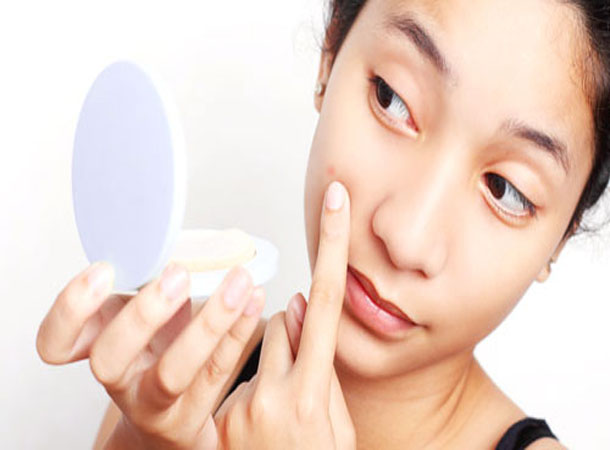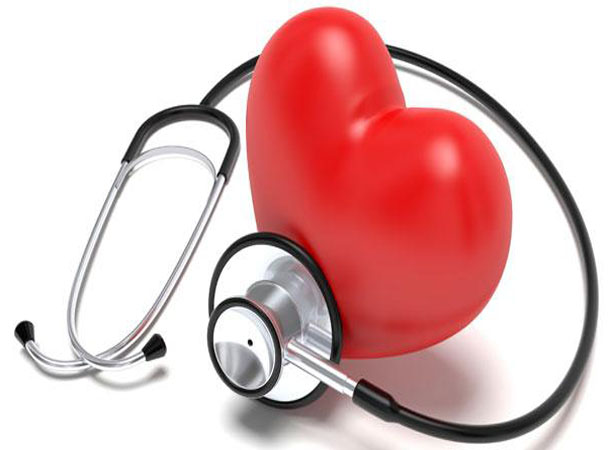Acne(pimples) are small papules, pustules, skin lesions or skin inflammations and are also known as zits or spots. They are usually found on the face, back, chest and shoulders.
The cause of Acne(pimples) can be:
a) Excess sebum secretion
b) Bacterial infections due to poor hygiene
c) Clogging of pores due to trapped oil, dirt, dust and pollution
d) Clogging of pores due to cosmetics and makeup products
e) Accumulation of dead skin cells and grime buildup
f) Unhealthy lifestyle and dietary habits
g) Consumption of junk food
h) Not drinking enough water
i)Heredity or genes
Age: Teenagers are more prone to hormonal changes and a cause of acne
1. Good Lifestyle:
Following a good hygiene routine that includes washing the face regularly to get rid of makeup, dirt, dust and grime is very important to keep pimples at bay. Cleaning the skin helps remove dead skin cells and also frees the skin from contaminants that may aggravate the growth of pimples. Do not forget to apply a toner after cleansing. Avoid popping the pimples and avoid cleansers that destroy skin balance. Check product ingredient labels for salicylic acid, neem, tea tree oil, honey or turmeric as each of these natural ingredients fight pimples.
2. Change Your Pillow Case Weekly
Forget the $50 bottle of acne cream you’ve been purchasing every month, changing your pillow case is a proven method for preventing breakouts. All of the sweat, dirt and makeup from your face is seeping into your pillow every night. Particularly if you don’t wash your face before heading to bed, basically you are sleeping in all of the dirt, oil, and debris that collected on your face all day.
3. Do Not Skip Moisturizing:
Contrary to popular belief, acne-prone skin needs moisturizing and hydration. Not providing the skin with enough moisture, will encourage sebaceous glands to produce more sebum or oil to compensate for moisture and leading to increased chances of acne. Consider choosing a moisturizer, which is oil-free, lightweight, water-based or gel-based and non-comedogenic will hydrate the skin without making it look oily or greasy. A basic beauty regime of cleansing, toning and moisturizing must be followed religiously.
4. Review Your Shampoo
Have you noticed that you’ve been breaking out a lot more than usual lately? You might want to check your shampoo. Shampoos and conditioners with a lot fragrance and chemicals can irritate skin and cause breakouts on your forehead, jaw, neck and back.
5. Stop Touching Your Face
You might notice that people who touch their face often are prone to breakouts. This is because the oils and dirt on your hands are constantly transferred to your sweet visage. This might seem like common sense but keeping your hands away from your face is harder than you think.
6. Check Your Laundry Detergent
Much like shampoos, laundry detergents can be a huge culprit when it comes to breakouts. If you’re experiencing more breakouts than normal it could very well have to do with the ingredients in your detergent. Many soaps contain harsh chemicals and fragrances that can irritate skin (especially when you use towels to dry your face).
7. Go Easy on the Makeup
This may be hard for some girls (especially those in high school) but lightening up on the makeup will almost certainly help control your breakouts. Not only are the ingredients in most makeup products bad for your skin but applying makeup means touching your face, which can lead to a breakout.
8. Stay Out of the Sun
A little bit of sun has been known to reduce breakouts but too much can cause damage to your skin and prompt a breakout. If you’re planning a weekend at the beach, be sure to load up on sunscreen and moisturizer–these will help keep your skin hydrated and protected from the sun which will equal less breakouts this summer.
9. Exercise:
With the hectic lifestyle nowadays, stress levels are high, just 30 minutes of daily exercise is excellent for the health as well as the skin. As daily exercise keeps hormone levels in balance and also releases toxins through sweat, it reduces the chances of pimples. Moreover, the importance of sleep should not be ignored. Take ample rest and ensure you do not over stress yourself.
10. Reduce Stress
Staying calm and happy has actually been proven to help control breakouts. Acne often appears when someone becomes stressed out or worried about something (perhaps you’re worried about breaking out) and tends to spread faster in these circumstances as well. The best thing to do is to keep calm and try not to sweat the small stuff. In doing so, you’ll feel and look better.
11. Quit Smoking and Drinking
Hopefully, this will be an easy one for most of you out there (because hopefully you don’t do either of these things to begin with) but if you do smoke or drink you should seriously consider quitting. Smoking and drinking dehydrate the skin, making it much more prone to breaking out.
12. Keep your face clean
Cleansing shall be one of the most important steps of your skin care routine. Even if you are not having an acne problem washing the face twice a day helps in removing dirt, oil and dead skin cells from the surface of your skin. Less oil and dirt also means less acne. While washing your face never apply soap and always use a mild face cleanser. Also wash the face only with warm or cold water as using hot water can cause pimples.
13. Use dermatological products or treatments
If all else fails then this can be your backup plan. There is a huge variety of anti-acne products- face washes, creams, face packs etc., available in the market these days. Search a little, find a product that will best suit your skin type and give it a try. If still your pimples are unlikely to go away then don’t hesitate from going to a dermatologist.
14. Watch your hair often
To avoid having pimples it is not just necessary to keep your face oil free but your hair shall also not be oily. Leaving overnight oil on your hair can cause pimples as the hair touching your face will make your skin oily. Wash your hair regularly and don’t let them fall on your face. Also go easy on products like hair gels, fragrances and deodorants as they can clog up the skin pores leading to pimples.
15. Apply ice
Ice soothes the skin, particularly the affected area which can help your skin to become pimple-free. Applying ice on the skin will remove the oil and dirt trapped inside and reduces the redness and swelling. To get rid of an eruption, put an ice cube in a cloth and gently press it against the affected skin. Or one can also make it a routine to apply crushed ice or ice cubes to the skin in order to avoid pimples.
16. Apply honey
Honey masks are quite a common acne treatment. Applying honey on the face works both as a preventive method and as a treatment for pimples. It is a natural antiseptic that soothes and heals the skin. The antioxidants present in honey can help in reducing the inflammation over the skin and making it pimple free. Apply some honey on your face for 15-30 minutes and then wash it off. Not only will it work against your acne problem but it also makes the skin smooth and supple.
17. Use lemons
Like honey, lemons are also believed to be a quite effective natural treatment for getting rid of pimples. Lemons can help avoiding pimples in more than one way. Lemon juice reduces the oil, kills bacteria, reduces redness and also removes the pimple scars. To use it over your pimples squeeze some fresh lime juice over a cotton swab or a cotton ball and apply it over your face. It can give quick results.
18. Use baking soda
Another wonder product which you already have in your kitchen and it can help you fight against pimples is baking soda. A mixture of baking soda and lemon juice can be applied on the skin to make it pimple free. Baking soda is an amphoteric compound which means it can work both as an acid and as a base. It helps in neutralizing the skin’s pH, imbalance in which is often a cause behind acne. It also dries the skin removing any extra oil and mixing some baking soda with water works wonderfully in cleansing and exfoliating our skin.
19. Apply toothpaste
While treating pimples you don’t always need to go and buy some specialized cosmetic product but your humble toothpaste can also be of a lot of use. Now while using toothpaste as a pimple treatment always choose a white toothpaste and not the gel or red, blue or green stripes ones. Also don’t use the teeth whitening toothpaste to apply over the skin. Wash your face with warm water and a cleanser and pat dry. Now take a pea size amount of toothpaste and apply it only over the affected area. Keep it for a couple of hours or overnight and then wash it. Your pimples must be either gone or much less visible.
20. Use Aloe Vera
Aloe Vera is a cactus like plant with anti-bacterial, anti-fungal, anti-septic, astringent and a lot more useful medicinal properties. It can be used in a lot of ways- as a moisturizer, a face mask, shaving oil or it can also be included in your diet. Aloe Vera can work wonders for treating and preventing acne as it removes excess oil and dirt from the skin. It stimulates the cell growth, and helps the damaged skin for healing faster.
Sources:
http://www.stylecraze.com/articles/how-to-prevent-and-remove-pimplesacne-21-effective-methods/
http://listovative.com/top-12-simple-tips-avoid-pimples/
http://www.activebeat.com/your-health/15-best-ways-to-prevent-acne-avoid-breakouts-with-these-tips/12/









